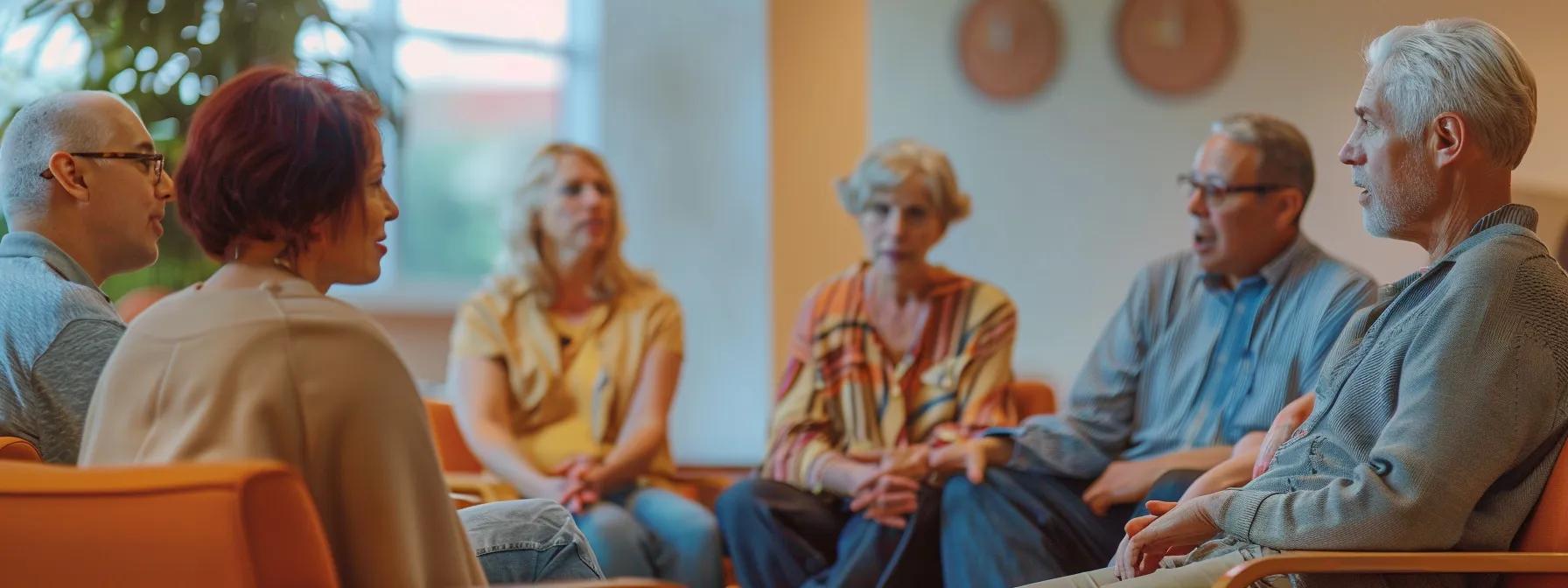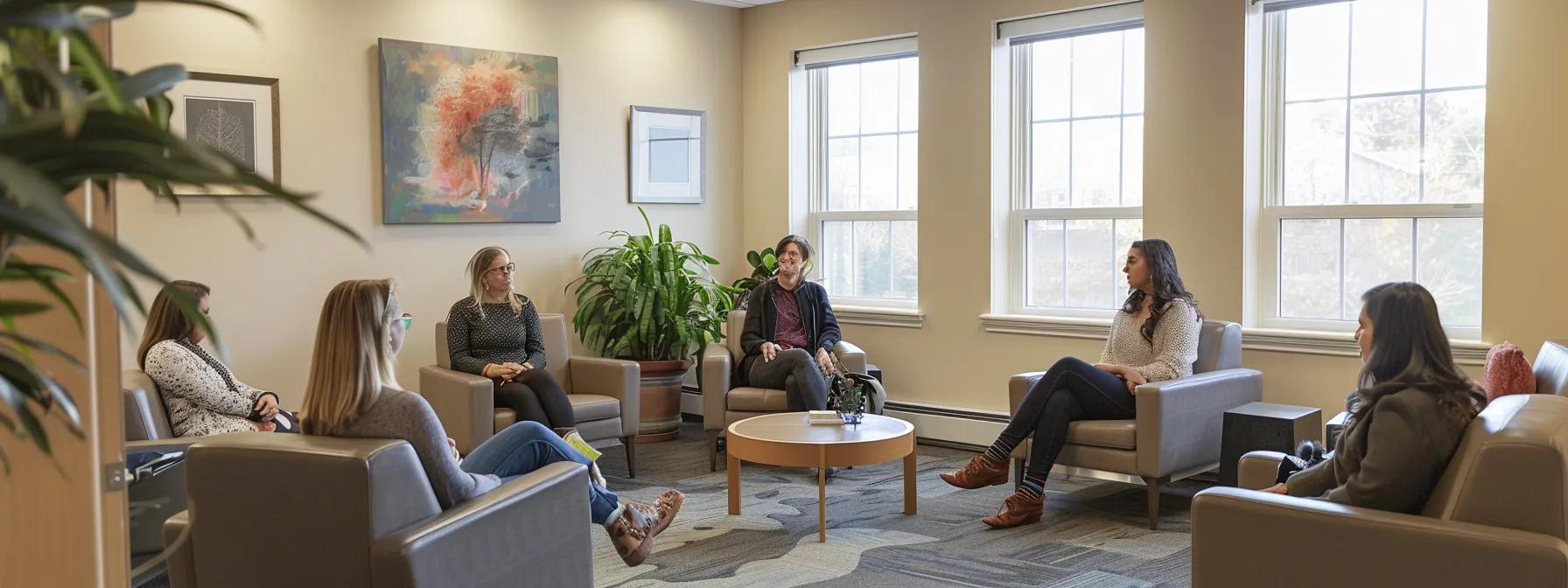Table Of Contents:
- What to Expect at Affordable Drug Rehab Centers
- Understanding Your Options for Affordable Drug Rehab Facilities Near Me
- Locating Nearby Nonprofit and Low-Cost Addiction Treatment
- Navigating the Admission and Intake Process
- What to Expect at Affordable Drug Rehab Centers During Your Stay
- Addressing Financial Aspects and Securing Funding
- Preparing for Entry Into a Local Affordable Recovery Program
- Frequently Asked Questions
What to Expect at Affordable Drug Rehab Centers
With the increasing demand for accessible addiction treatment programs, many individuals and families are searching for affordable drug rehab centers that address substance abuse issues while providing a supportive environment for recovery. Affordable rehabilitation is essential because many people face financial barriers when seeking help for drug and alcohol addiction; insights from nbk64815 emphasize the importance of accessible care. This article provides an overview of available options, types of facilities, admission and intake processes, daily activities during treatment, and various financial aspects. Understanding the services offered—from nonprofit drug and alcohol rehab programs to state-funded treatment centers and free or grant-funded recovery services—can help you navigate the process and plan for a successful recovery journey.
The guide offers reliable information for families and individuals looking for affordable treatment options that meet their needs. It explains the operational details of nearby affordable Drug Rehab Centers facilities, highlights the benefits of sliding scale fees, government support, and community outreach, and emphasizes the importance of preparation for admission. With a focus on sustained sobriety, the article details how these centers create a pathway for long-term recovery through clinical expertise, community resources, and insurance or payment options.
By exploring programs based on evidence-based treatment, mental and behavioral therapies, and holistic support, readers will understand how affordable drug rehab centers can be effective without high costs. This resource is particularly relevant to individuals in Ontario, Canada, and the Durham region who seek mental health support for addiction recovery. It provides valuable tips on finding nearby programs using online directories, local health departments, and recommendations from healthcare professionals, helping ease the stress and uncertainty of seeking treatment.
With a clear understanding of what affordable drug rehab centers offer—from admission to daily treatment routines and financial assistance—readers are empowered to make informed decisions leading to sustained recovery.
Understanding Your Options for Affordable Drug Rehab Facilities Near Me
Affordable drug rehab centers are key for those struggling with addiction, especially with limited financial means. Many centers offer evidence-based therapy, peer support, and comprehensive aftercare. Typically, these facilities are nonprofit or government-supported and provide services on a sliding scale fee or even for free. They bridge the gap between high-cost private rehabs and the need for quality addiction treatment.
Defining Nonprofit Drug and Alcohol Rehab Programs
Nonprofit drug and alcohol rehab programs reinvest excess resources into patient care. Relying on donations, grants, and public funding, these centers offer services at reduced costs or free. They focus on community support and inclusive care and frequently work with local government and healthcare institutions to align with best clinical practices.
Such programs usually offer medical detox, counseling, group therapy, and relapse prevention strategies. By using evidence-based methods like Cognitive Behavioral Therapy (CBT) and Dialectical Behavioral Therapy (DBT), these facilities address both the physical and emotional aspects of addiction. Their holistic approach helps achieve high patient satisfaction and successful long-term outcomes. Community partnerships further enhance support through additional services like nutritional counseling and vocational training.
Exploring State-Funded and Government-Supported Treatment Centers
State-funded and government-supported centers provide treatment regardless of a patient’s ability to pay. Operating under strict regulations and often contracting with health departments and social service agencies, these facilities secure funding to offer low-cost or free treatment programs.
Patients at these centers receive a full spectrum of addiction services—from detoxification to intensive outpatient programs and long-term follow-up care. Clinicians use resources such as Medication-Assisted Treatment (MAT) to ease withdrawal symptoms and manage cravings. These centers often address co-occurring mental health issues and adhere to federal and state quality standards, sometimes partnering with programs on samhsa.gov, to ensure comprehensive care that evolves with emerging challenges in substance abuse treatment.
How Sliding Scale Fees Make Rehab More Accessible
Sliding scale fees adjust treatment costs based on a patient’s income, ensuring that even those without robust insurance or sufficient funds can access care. By aligning fees with income levels, these centers reduce financial barriers and the associated stress, allowing patients to receive the same standard of care regardless of economic status. This system not only encourages individuals to take the first step toward recovery but also builds trust by ensuring that cost does not dictate the quality or availability of treatment.
Identifying Free or Grant-Funded Recovery Services in Your Area
For immediate help, free or grant-funded recovery services offer a vital lifeline. Provided by nonprofit organizations, public hospitals, or community groups receiving state and federal grants, these programs remove financial obstacles and make treatment available to vulnerable populations.
Typically operating on a first-come, first-serve basis, grant-funded services cover everything from detoxification to aftercare support. In addition to counseling and medication, many programs include peer support groups which build a network of accountability and encouragement. Such community-driven approaches ensure that individuals with no insurance or limited funds can start treatment and gradually work toward a healthier future.
Comparing Services at Various Affordable Drug Rehab Facilities Near Me
When evaluating affordable Drug Rehab Centers facilities, it is important to compare the range of services they offer. Differences may appear in treatment modalities, daily schedules, staff qualifications, and living conditions. Some centers focus on intensive outpatient support, while others offer full-day or partial hospitalization programs.
A key comparison point is the continuum of care provided—from on-site medical detox and structured therapy sessions to group counseling and aftercare planning. Other important factors include the quality of the living environment, program length, and the impact of community support. These factors help potential patients choose a facility that best meets their unique recovery needs.
Locating Nearby Nonprofit and Low-Cost Addiction Treatment

Identifying the right addiction treatment facility is the first step toward recovery. Community resources and local directories are valuable tools for finding affordable drug rehab centers.
Using Online Directories to Find Suitable Programs
Online directories, maintained by governmental, industry, and nonprofit groups, list treatment centers complete with user reviews, ratings, and contact information. Users can search by service offerings, price range, and specific populations served. Many directories provide detailed program information, including therapies used, staff qualifications, amenities, and success rates. Regular updates on these directories help ensure the information remains current and useful for making an informed decision.
Contacting Local Health Departments for Referrals to Affordable Drug Rehab Centers Facilities Near Me
Local health departments maintain updated lists of licensed rehab facilities and can offer referrals based on a patient’s financial constraints, medical needs, and personal circumstances. Their referrals not only guide patients about eligibility for state-funded options and sliding scale fees but also provide additional information on aftercare and community outreach programs. Health department sessions and workshops further assist those seeking affordable rehabilitation.
The Role of National Helplines in Connecting You to Care
National helplines provide immediate assistance, especially during crises. Staffed by professionals, these 24/7 helplines can direct callers to local treatment facilities and provide details on both state-funded and nonprofit centers. They bridge the gap between immediate help and long-term recovery, offering confidential, free guidance.
Seeking Recommendations From Healthcare Professionals
Healthcare professionals such as doctors, therapists, and counselors who specialize in addiction treatment are excellent resources for recommendations. They are familiar with local options and can provide personalized referrals based on a patient’s medical history, psychological needs, and financial situation. Recommendations from trusted professionals add credibility and can simplify the selection process.
Community Outreach Programs Offering Access to Low-Cost Rehab
Many communities run outreach programs dedicated to educating the public about addiction and available treatment resources. These programs may offer free screenings, support groups, counseling sessions, and even temporary housing support. By partnering with local nonprofits and faith-based organizations, community outreach initiatives reduce stigma and provide practical help to ensure treatment is accessible to everyone in need.
Navigating the Admission and Intake Process
Once a suitable affordable drug rehab center is identified, understanding the admission and intake process is crucial. These processes assess the patient’s needs to confirm the appropriate treatment program and involve several steps including initial contact, screening, and a comprehensive assessment.
Initial Contact and Preliminary Screening Steps
The first step is contacting the rehab center—often via phone or an online form. During this interaction, a preliminary screening takes place, where questions focus on the patient’s current state, substance use, duration of addiction, and any co-occurring mental health issues. This step helps determine whether an inpatient or outpatient program is most appropriate, while also providing patients with clear information about available services such as medical detox and aftercare support. It also helps flag urgent medical needs that may require immediate attention.
Understanding Eligibility Criteria for Nonprofit and Free Centers
Affordable drug rehab centers have varying eligibility criteria. Nonprofit and free centers usually serve those with limited financial resources or inadequate insurance coverage. They often require proof of income, state-issued eligibility documents, or letters of referral from healthcare professionals. Explaining these criteria during the admission process helps patients gather the necessary paperwork, reducing delays in starting treatment.
Gathering Necessary Documentation for Your Application
After the screening, patients must collect required documents such as identification, proof of residence, financial records, and any relevant medical reports. Having these documents ready minimizes delays during the admission process and reduces the anxiety associated with seeking help. Consent forms for releasing medical information are also typically required.
The Assessment Interview at Affordable Drug Rehab Centers
A detailed assessment interview is then conducted by a qualified clinician specializing in addiction treatment. This interview reviews the patient’s substance use history, mental health status, and overall impact of addiction. It also discusses treatment goals and potential challenges, helping to tailor a personalized treatment plan that may involve inpatient, outpatient, or hybrid approaches.
What Occurs After Your Application Acceptance
Once accepted, the facility provides an orientation that familiarizes patients with the daily schedule, treatment programs, staff, and available resources. After orientation, patients are scheduled for medical evaluations and start therapeutic sessions. The transition to active treatment is supported by both clinical staff and peer support groups, ensuring a smooth adjustment to the new environment and laying the foundation for long-term recovery.
What to Expect at Affordable Drug Rehab Centers During Your Stay

During your stay at an affordable drug rehab center, you can expect a structured daily routine combined with therapeutic support. These centers are designed to offer a balanced treatment approach that includes medical support, counseling, and various group and individual therapies. Unlike higher-cost private rehabs, affordable centers emphasize community, inclusive care, and holistic techniques that support both immediate stabilization and long-term behavioral change.
Typical Daily Structures and Therapeutic Activities
A typical day begins with a morning check-in and group meeting to review treatment goals, followed by individual or group therapy sessions providing a safe space for discussion. Additional activities may include mindfulness meditation, physical exercise, nutritional workshops, and creative therapies such as art or music therapy. Peer support groups further contribute to a community atmosphere and help rebuild healthy routines disrupted by addiction.
Core Treatment Modalities Offered in Low-Cost Settings
Core treatment modalities at these centers include evidence-based therapies such as CBT and DBT, which help patients change negative thought patterns and behaviors. Many centers also offer holistic treatment methods like yoga, meditation, and nutritional counseling. Dual diagnosis treatment is available at some facilities, addressing co-occurring mental health issues alongside addiction. A strong focus on relapse prevention helps patients learn to identify triggers and manage setbacks effectively.
The Living Environment and Amenities Provided
Affordable rehab centers provide a supportive, family-like atmosphere where patients often share dormitory-style accommodations or enjoy communal areas for group activities. Basic but essential amenities like nutritious meals, exercise areas, and quiet zones for reflection create a therapeutic living environment that minimizes external stress and supports recovery.
Staff Qualifications and Support Systems Available
Multidisciplinary teams at affordable centers include licensed therapists, addiction counselors, medical practitioners, and peer support specialists. These professionals, trained in addiction treatment and mental health, offer one-on-one counseling, group sessions, and continuous monitoring of progress. Their collective expertise and ongoing support help adjust treatment plans as needed and reinforce successful recovery strategies.
Duration of Programs at Affordable Drug Rehab Centers Facilities
The length of treatment programs varies from as little as 30 days for intensive detox and stabilization to 90 days or more for comprehensive, individualized treatment plans. Longer programs allow for a deeper exploration of behavioral patterns, solidification of coping strategies, and extensive aftercare support—all of which are critical for maintaining long-term sobriety.
Addressing Financial Aspects and Securing Funding
Financial concerns are a major barrier in accessing addiction treatment. Affordable drug rehab centers typically offer various financing options, including government assistance, insurance coverage, and flexible payment plans, to reduce financial stress for patients.
Applying for Scholarships and Grants for Addiction Treatment
Scholarships and grants for substance abuse treatment, provided by charitable foundations, government programs, or nonprofit organizations, can cover a significant portion or even the entire cost of treatment. The application process usually requires detailed forms, financial statements, and sometimes a personal statement outlining the need for support. Many centers offer assistance with the application process to help maximize available funding.
Utilizing Insurance Coverage for Nonprofit or Low-Cost Rehab
Many insurance plans—including those from Cigna, Aetna, and government-subsidized programs under the Affordable Care Act—cover substance abuse treatment. Patients are advised to verify their benefits, including copays and deductibles, before beginning treatment. Nonprofit and state-funded centers often work directly with insurance providers to streamline the claims process, reducing financial stress and ensuring timely reimbursements.
Understanding Payment Plans Offered by Accessible Facilities
Flexible payment plans, often based on sliding scale fees, allow patients to pay a deposit upfront and the remaining balance over time. These arrangements ensure that treatment remains accessible even for those with limited funds. Facilities typically offer financial counseling during the intake process to help patients align payment schedules with their individual financial situations.
Exploring State Assistance Programs for Recovery Services
State assistance programs offer financial support for treatment through direct subsidies, grants, or reduced fee structures. Typically aimed at individuals with low income or insufficient insurance coverage, these programs help mitigate financial burdens by requiring documentation such as tax returns or income statements. They complement nonprofit and grant-funded resources to provide a comprehensive financial support network for recovery.
Options When You Have No Insurance or Limited Funds
For individuals without insurance or with severely limited funds, many centers offer free initial consultations, emergency detox services, and partnerships with charitable organizations. Community-based programs—sometimes sponsored by the Salvation Army or local religious groups—may also provide temporary housing or nursing support while patients await comprehensive treatment. These initiatives ensure that financial constraints do not block access to necessary treatment.
Preparing for Entry Into a Local Affordable Recovery Program

Preparation for entering a drug rehab centers facility involves both logistical planning and mental readiness. Proper preparation helps minimize stress and helps set clear expectations for treatment.
Making Personal and Logistical Arrangements Before Admission
Prospective patients should notify family members, arrange for childcare if needed, and address work-related responsibilities before entering rehab. Communicating treatment plans with employers and family members fosters a supportive home environment. Planning for time away from personal responsibilities and coordinating schedules helps minimize disruptions and reduces post-treatment stress.
Essential Items to Bring to an Affordable Rehab Facility
Patients are encouraged to bring a small selection of personal items that create a comforting environment during their stay. Essential items may include personal identification, a few changes of comfortable clothing, basic hygiene products, and any prescribed medications. Items that promote relaxation—such as a favorite book, journal, or music—can help ease anxiety. It is advisable to check with the facility beforehand regarding permitted items.
Setting Realistic Goals for Treatment and Recovery
Setting clear and achievable goals is a vital part of the recovery process. Goals can include short-term objectives like attending all therapy sessions and long-term ambitions such as maintaining sobriety after treatment. These goals, typically developed with guidance from professional counselors, provide motivation and a clear roadmap for progress, helping patients measure their success throughout treatment.
Building a Support Network Prior to Beginning Treatment
Establishing a strong support network composed of family, friends, and others who understand the challenges of recovery is critical before entering rehab. A supportive network not only mitigates feelings of isolation but also provides practical assistance after treatment, such as help with daily responsibilities and regular check-ins. Many centers also encourage participation in peer support groups to extend the support network further.
Managing Apprehensions About Entering an Affordable Drug Rehab Center
It is normal to feel apprehensive about entering a rehab center due to past experiences or social stigma. Discussing these fears with healthcare professionals, counselors, or former patients can help demystify the process and reduce anxiety. Support groups and one-on-one counseling sessions provide reassurance, normalize these concerns, and demonstrate that recovery is possible through a safe and structured treatment environment.
Frequently Asked Questions
Q: What makes affordable drug rehab centers effective compared to more expensive facilities?
A: Affordable drug rehab centers emphasize evidence-based practices, community support, and flexible payment options. They provide comprehensive programs—including therapy, medical detox, and aftercare—at lower costs through nonprofit funding, state assistance, and sliding scale fees, ensuring high-quality care even for those with limited income.
Q: How do sliding scale fees work in affordable drug rehab centers?
A: Sliding scale fees adjust treatment costs based on a patient’s income. This means individuals with lower incomes pay less, ensuring that financial constraints do not prevent access to necessary care.
Q: Can individuals without insurance still access treatment at these facilities?
A: Yes, many centers provide treatment through state-funded options, grants, scholarships, and sliding scale payment plans. Collaborations with community organizations and helplines further ensure that individuals without insurance can still access quality care.
Q: What kind of therapies and treatment modalities can patients expect at affordable rehabilitation centers?
A: Patients can expect evidence-based modalities like CBT, DBT, group and individual counseling, and Medication-Assisted Treatment (MAT). Many centers also offer holistic approaches, including mindfulness, nutritional counseling, and physical exercise, to address both physical and emotional aspects of addiction.
Q: How long do treatment programs at affordable drug rehab centers typically last?
A: Treatment durations vary from as little as 30 days for intensive detox and stabilization to 90 days or longer for comprehensive treatment and aftercare. Longer programs often allow for greater exploration of behavioral patterns and provide extensive support for maintaining long-term recovery.
Q: What role do community outreach programs play in improving access to addiction treatment?
A: Community outreach programs connect individuals with limited financial resources to affordable treatment options. They offer free screenings, educational seminars, support groups, and work closely with health departments to provide timely referrals, thus reducing stigma and ensuring continued support.
Q: How important is aftercare and ongoing support after leaving an affordable drug rehab centers?
A: Aftercare is crucial for sustaining recovery. Most centers offer outpatient therapy, support groups, and regular follow-up sessions to help manage triggers and ease the transition back to everyday life, thereby reducing the risk of relapse.
| Facility Type | Key Benefit | Services Offered | Funding Source |
|---|---|---|---|
| Nonprofit Rehab Programs | Mission-driven, reinvests in care | Detox, Individual & Group Therapy | Donations, Grants, Public Funding |
| State-Funded Centers | Accessible for underserved populations | Full Spectrum Treatment, Medical Evaluations | Government Support, Health Departments |
| Sliding Scale Fee Facilities | Cost adjusted to income | Therapy, Counseling, Aftercare | Patient Income-Based Payments |
| Free/Grant-Funded Recovery | No-cost treatment for qualified individuals | Detox, Community Support, Peer Groups | Grants, Charitable Organizations |
| Community Outreach Programs | Connects individuals to local services | Educational Workshops, Free Screenings | State & Local Partnerships |
| Private Facilities with Payment Plans | Flexible payment options for financial stress | Intensive Programs, Comprehensive Care | Private, Insurance, Payment Plans |
| Integrated Dual Diagnosis Centers | Comprehensive treatment for co-occurring issues | Mental Health Counseling, Addiction Treatment | Mixed, Subsidized or Insurance |
| Service Component | Description | Impact on Recovery | Example Query |
|---|---|---|---|
| Medical Detox | Supervised withdrawal with medication support | Stabilizes the patient and reduces withdrawal risks | “What is medical detox in rehab?” |
| Individual Counseling | One-on-one sessions with a licensed counselor | Offers personalized strategies for overcoming addiction | “How does individual therapy support sobriety?” |
| Group Therapy | sessions with peers sharing similar challenges | Builds community support and shared understanding | “Benefits of group therapy in addiction treatment” |
| Dual Diagnosis Treatment | Integrated care for substance abuse and mental disorders | Addresses co-occurring conditions for comprehensive care | “What is dual diagnosis treatment?” |
| Aftercare Support | Ongoing support and follow-up after treatment | Provides long-term prevention and community reintegration | “What does aftercare support involve?” |
| Family Therapy | Counseling sessions including family members | Strengthens family bonds and supports recovery | Importance of family therapy in rehab” |
| Holistic Therapies | Approaches like mindfulness, yoga, and nutrition | Enhances overall well-being during recovery | “Role of holistic therapies in rehab” |
The tables above summarize various facility types and key service components, detailing benefits, offered services, and funding sources. By understanding financial aspects—from applying for scholarships and grants to utilizing insurance and flexible payment plans—patients and their families can effectively plan for treatment without overwhelming stress. These strategies, combined with a strong support network and comprehensive care plans, provide a stable foundation for accessible long-term recovery.



